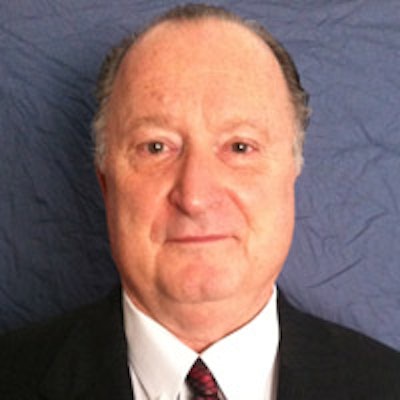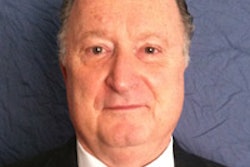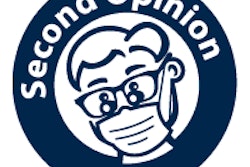
Since I began my first dental client consultancy for a corporate dental practice in Arizona (about two years before the publication of my article, "The emergence of the dental practice management company," in the September 2009 edition of Dental Economics [Vol. 99:9]), I have listened to numerous dentists instruct me that they wanted nothing to do with a practice having a large Medicaid patient roll.
 Thomas Climo, PhD, is a dental practice management consultant and a past professor of economics in England.
Thomas Climo, PhD, is a dental practice management consultant and a past professor of economics in England.
The rationale was that as patients under Medicaid received treatments for "free," and as a "no-show" fee is not permitted under Medicaid, the absentee base of scheduled appointments soars above 50%, which requires heavy overbooking on a daily basis.
The fact that Medicaid invoices are paid on an erratic schedule, unlike patients with insurance coverage, also was cited by practitioners as a detriment to owning a Medicaid practice. I will never forget a dentist client of mine in New Hampshire, as we were walking into his bank to request an increase in a line of credit, pointing to a business sign and building across the street housing a Medicaid practice, making a nasty face, and saying, "I never want to have a practice like that."
Forgiving the social bias of the face-making, this dentist clearly considered all Medicaid practices, not just this one in New Hampshire, as inferior to his private-pay practices -- at the time he had two with total revenues of $400,000 and $200,000 each. Since the meeting with his bank on that morning four years ago, we have built these two practices to 11 practices with total revenues of more than $8 million (how this strong revenue growth rate came about is from a surprising development to be shared at the end of this article).
Then, a request came from a dentist in New York asking me to help him set up a dental practice management (DPM) company comprising ownership of two large practices in the state of New York that were entirely Medicaid-based.
As I perused the charts of the Medicaid practices, I noticed three things:
- Patients showed up with only an 18% absentee rate, because the owner dentist set up a telephone room to call any no-shows 30 minutes after a missed appointment to reschedule a new appointment date and time; then this phone call was followed up with another call the day before the rescheduled appointment to ensure a showing.
- Medicaid paid the weekly bundled invoices within three weeks like clockwork.
- The patient roll totaled about 50,000 patients.
Sure, Medicaid paid less per procedure than private pay, but if you can fill the daily appointment book, you will then have a full workday product without staff -- especially hygienists -- spending too much time in the break room, as they invariably do when no patients are booked.
The math is easy.
Whereas in a private-pay practice, where a solo practitioner may have a patient roll of 2,000 with half of them spending $300 per visit or about $500 per annum, in this Medicaid practice you have a patient roll of 50,000, minus 18% absenteeism, or 20,500 patients spending $150 per visit or $200 per annum. Revenue in the sample private-pay practice is $500,000; revenue in the Medicaid practice is $4.1 million.
Earnings before interest, taxes, depreciation, and amortization (EBITDA) is around 12% in a private-pay practice and 6% in the Medicaid practice. This leaves EBITDA numbers at $60,000 for the private-pay practice and $246,000 for the Medicaid practice.
There was nothing noteworthy about random or late payments in the Medicaid practice; in fact, the turnover of invoicing to wire transfers by the state into the practices' bank account were within three weeks 95% of the time. [Note: New York moved from state-run to managed care administration in January 2013, so wire transfers now come from managed care companies.]
The same could not be said for the chart review of a private-pay practice.
The next objection against Medicaid practices turns on the possibility that adult Medicaid -- children older than a state-specific age between 18 and 26 -- can be pulled by a state authority at any time, thereby lending revenue risk to a Medicaid practice serving adults. For example, half the patient roll at the New York practices was older than 21.
Of course, the observation is a generality and completely ignores the history of Medicaid dentistry in the state of New York.1
What is the likelihood of any negative decisions being taken regarding the continuance of Medicaid coverage for both pediatric and adult patients at the state level in Albany?
The answer is that New York is irrefutably the most liberal and consistent state when it comes to adult Medicaid in dentistry. In more than 30 years of coverage, the "idea" of reverting to only pediatric Medicaid (up to age 21, soon age 26) has presented itself in the New York Legislature on just three occasions. Each time, the idea was overwhelmingly defeated.
Medicaid in New York has a long-standing and strong tradition of treating both pediatric and adult patients. A recent 49-page report of the New York State Department of Health makes this commitment and tradition quite clear.2 The report provides a thorough accounting of the history, tradition, and future of health insurance, including Medicaid in the state of New York.
Quoting from the conclusion of the report, here is what the Medicaid Redesign Team for the state of New York had to say:
New York is ready to lead. New York is prepared to work very hard to fundamentally reshape how healthcare is delivered so as to improve patient outcomes and lower costs. New York is also united in its support for reform. Governor Cuomo's innovative Medicaid Redesign Team ensured that the action plan outlined in this report has broad support among the healthcare stakeholder community.
Now all is left is to implement. New York will work with the federal government as well as the state's healthcare stakeholders to successfully implement this important action plan.
New York is well-positioned to lead the nation in Medicaid reform. Governor Cuomo's Medicaid Redesign Team helped develop a multiyear action plan that, if fully implemented, will not only bend the state's Medicaid cost curve but also improve health outcomes for more than 5 million New Yorkers.
Medicaid reform also has the potential to mean broader health system reform in New York. The reforms identified in the action plan will lead to broad changes in healthcare delivery that will benefit the state's 19 million residents. New York is willing to use all the tools at its disposal to drive innovation across the health care system, including aligning payment strategies with commercial insurers through the state's health insurance exchange.
Finally, to fully implement the MRT action plan a ground-breaking new Medicaid 1115 waiver will be necessary. The waiver will both allow the state to reinvest in its health care infrastructure as well as give the state the freedom to innovate. The new waiver will allow the state to prepare for implementation of the national healthcare reform as well as effectively bend the cost curve for the state's overall healthcare system.
In other words, the New York has no intention of abandoning its commitment to federally mandated pediatric dentistry or voluntary adult Medicaid coverage for those older than age 26.
[Note: The fact that the Patient Protection and Affordable Care Act defines pediatric dentistry as up to age 19 and then fails to even address the issue of adult dental care over the age of 19 remains an outstanding matter and concern for good overall national oral healthcare.]
Conclusion
Once the DPM was set up for these Medicaid practices, I prepared a public valuation for a sales price predicated on $246,000 of EBITDA at a cost of capital for private equity of 10.97% for a sales price of $2.2 million, expecting the sale to go to a private equity group.
Private equity did not get the practices. The group I approached was outbidded by the New Hampshire dentist I referred to above, who made an offer of $3.2 million. The dentist recalibrated the EBITDA he could generate off his management company and altered the EBITDA to $350,000, justifying his higher and winning price.
In applying for a New York state dental license and in acquiring these two Medicaid practices in New York, the New Hampshire dentist doubled his total revenues from $4 million over nine practices to $8.1 million over 11. The New Hampshire dentist had changed his mind about the economic attraction of Medicaid dentistry. I recommend that you do too.
Thomas Climo, PhD, is a professor emeritus of accounting and finance at a major university in the U.K. He has published extensively about the importance of modern managerial and financial decision-making for dentistry. He is a consultant to corporate and solo practitioner dental practice management companies in the states of Arizona, California, Connecticut, Nevada, New Hampshire, New York, and Massachusetts. He can be reached by email at [email protected] or by telephone at 702-578-2757.
The comments and observations expressed herein do not necessarily reflect the opinions of DrBicuspid.com, nor should they be construed as an endorsement or admonishment of any particular idea, vendor, or organization.
References
- For a full account of adult Medicaid coverage for every state in the U.S., see the Kaiser study available at https://www.kff.org/medicaid/state-indicator/dental-services/.
- The report entitled, "A Plan to Transform the Empire State's Medicaid Program," is available at http://www.health.ny.gov/health_care/medicaid/redesign/docs/mrtfinalreport. It is augmented by a second report more specific to this transformation: "New York State Medicaid Redesign Team (MRT) Waiver Amendment," available at http://www.health.ny.gov/health_care/medicaid/redesign/docs/2012-08-06_waiver_amendment_request.pdf.



















